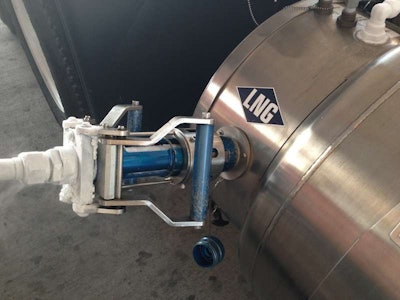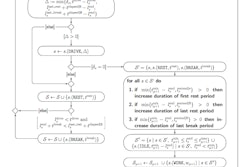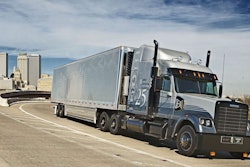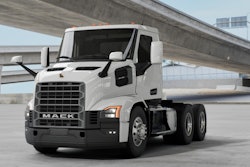
Fact: While this statement may be true for trucks that run on compressed natural gas, trucks powered by liquefied natural gas actually fuel comparably to diesel tractors at a rate of 12 or more diesel gallon equivalents (DGEs) per minute. LNG is often the best alternative-fuel option for long-haul trucking applications where trucks operate between two or more LNG fueling locations and where vehicle weight and operating ranges are important.
LNG refueling requires the use of gloves and protective eyewear to protect drivers from exposure to unintentional release of cryogenic LNG. In addition, drivers must use air hoses at the LNG fueling island to blow debris from the LNG fuel nozzle and tank receptacle to prevent contaminants from entering the LNG fuel tank.
CNG, on the other hand, has two fueling options to fill onboard tanks to a maximum pressure, usually 3,600 psi: “fast fill” and “time fill” (also referred to as “slow fill”). The latter is used most commonly in return-to-base operations where trucks can be parked overnight and refueled over the course of several hours depending on the size and number of CNG fuel tanks onboard the truck. This method is used commonly in refuse, transit bus, pickup-and-delivery and other applications where trucks aren’t operating in a round-the-clock environment and have a centrally located refueling station.
CNG fast fill uses compressors to fill tanks quickly for regional, over-the-road and port drayage applications. However, the compressors and electrical systems add significant cost to the station buildout, and most fueling islands share a compressor. As a result, if two CNG trucks are refueling simultaneously on two islands powered by a single compressor, the truck with the most pressure in its tank(s) will not receive any CNG until the pressure in the tank(s) of the second truck is equalized.
It also is worth noting that CNG fleet operations using the time-fill method generally are able to get more storage density than fast-fill operations. As CNG is dispensed to a truck’s tanks in a fast-fill operation, CNG temperature rises, resulting in an expansion of the gas and a loss of density. Since time fill’s refueling rate is much slower, the CNG stays closer to ambient temperature, resulting in a higher density of CNG in the tanks.










